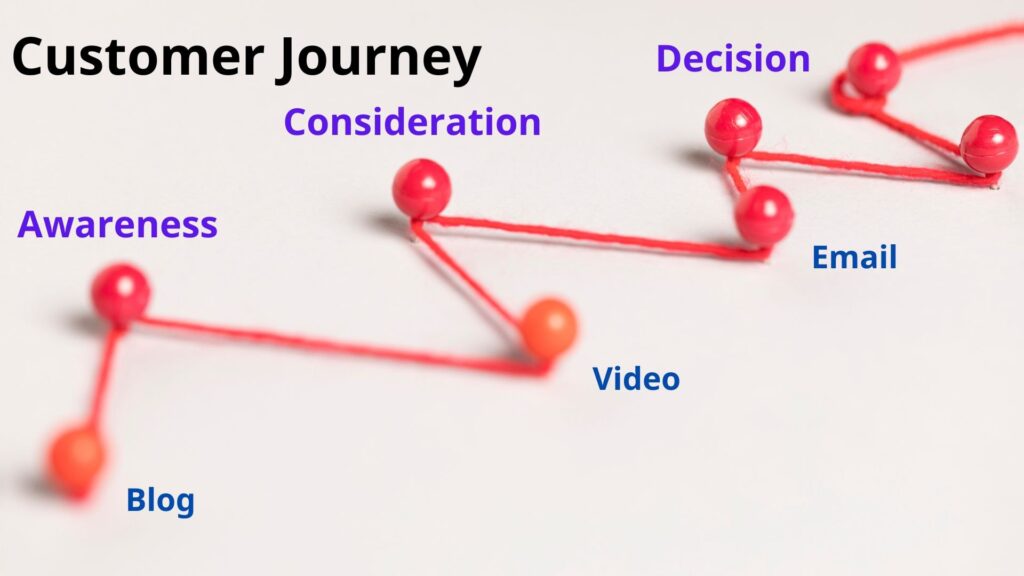Producing valuable content isn’t just about catchy headlines or vibrant visuals but rather making informed decisions rooted in relevant data. Marketers are increasingly turning to data-driven content to improve the impact of their marketing efforts, aligning each piece with audience behavior, search traffic, and measurable outcomes. By analyzing website analytics, first-party data, and CRM data, teams can uncover key insights into how to create targeted and engaging content that resonates with current customers and attracts new ones.
So, what is data-driven content, and why is it essential to a successful content marketing strategy? It’s a structured approach to content creation that relies on data analytics, your audience’s demographics, and performance metrics to guide every decision from keyword research to the best distribution channels. Instead of relying on assumptions or traditional marketing instincts, marketers use tools like Google Analytics, customer data platforms, and machine learning to shape a data-driven content strategy that supports both customer retention and acquisition.
When paired with human creativity and a strong content strategy, data transforms into a powerful force behind more personalized content, better marketing channels, and stronger brand authority.
What Is Data-Driven Content?
Data-driven content is the practice of using relevant data to guide and inform the content creation process from ideation and planning to production and performance optimization. Rather than relying on assumptions or gut instincts, data-driven content marketers use customer behavior, search rankings, and audience demographics to decide what to create, when to publish, and where to distribute it. Teams can produce personalized messages that truly resonate with their target audience across the customer journey.
By understanding what data-driven content is, marketers can shift from guesswork to precision. Whether it’s social media posts, how-to blogs, or long-form web content, data helps ensure every asset has a purpose and measurable impact.
From first-party data collected through website analytics to insights gathered through other channels, the goal is to build a content marketing strategy that’s efficient and aligned with business outcomes.
Defining Data-Driven Content in a Digital Landscape
Data-driven content combines internal data with external insights like search traffic, industry trends, and keyword research to shape more strategic and effective messaging. Content marketers use tools like customer data platforms and content performance dashboards to track key metrics such as bounce rates, click-throughs, time on page, and conversions. These insights guide decisions around future content, helping teams create content that’s relevant, timely, and aligned with user intent.
The shift to data-driven marketing transforms how teams approach storytelling. Every blog post, video, or email becomes an opportunity to test, learn, and refine. Marketers can also use machine learning and automation to scale their data-driven strategy, personalize messages, and maintain a logical content hierarchy across platforms.
Why the Shift Toward Data Matters in Marketing
A one-size-fits-all message no longer drives action the way personalized content does. With a data-driven content marketing approach, marketers can increase relevance by tailoring their messaging to specific stages of the customer journey or to detailed buyer personas. This results in higher engagement, stronger trust, and more efficient lead nurturing.
Additionally, using data to guide content helps align marketing with sales and customer success teams. By analyzing content usage and performance across the funnel, organizations can ensure that core content and supplementary content support both acquisition and customer retention efforts.
The ability to centralize content management and measure performance across marketing channels allows teams to pivot quickly, maintain consistency, and amplify what works, making the entire marketing strategy smarter and more scalable.
Aligning Content with the Customer Journey
One of the most powerful advantages of a data-driven content strategy is supporting the customer journey at every stage from discovery to decision to loyalty. When marketers analyze data from multiple sources, such as website analytics, social media engagement, and customer feedback, they can determine what types of valuable content best serve each touchpoint. Content goes from informative to timely, relevant, and action-oriented.

Rather than flooding audiences with generalized messaging, a data-driven marketing strategy delivers content that mirrors the user’s mindset in the moment. For instance, someone in the awareness phase may respond best to how-to content or educational blog posts, while someone closer to purchase might need product comparisons or customer success stories. By aligning content with intent, marketers drive higher engagement and conversions, while strengthening the overall brand experience.
Mapping Data to Key Buyer Touchpoints
To effectively map content to the customer journey, marketers should begin by identifying key interaction points and matching them with the most appropriate content formats and messaging styles. For example:
- Awareness: A first-time visitor might find your blog through search traffic linked to an industry trend. Here, use data to spotlight top-performing blog posts or core content that addresses common pain points.
- Consideration: At this stage, audiences are evaluating options. Use keyword research to inform personalized content like comparison guides, expert Q&As, or targeted email sequences.
- Decision: Prospects here need assurance. Metrics from CRM data and sales interactions can guide testimonials, case studies, and interactive tools that help seal the deal.
Using tools like a customer data platform or Google Analytics, teams can track where users drop off or engage most and adjust the content strategy accordingly. The key is to be responsive; let the data, not your assumptions, guide your message.
Using Behavioral Insights to Influence Messaging
Audience behavior tells a story. High bounce rates on certain landing pages might suggest the content doesn’t align with user expectations. Low engagement on social media posts could mean the tone or format misses the mark. A data-driven approach allows marketers to pivot in real time based on behavioral signals, not delayed reporting.
Monitor micro-interactions. Are users scrolling all the way through a piece of web content? Are they clicking embedded CTAs or spending time on video content? These seemingly small actions offer key insights into what resonates. Over time, these patterns help refine not just the message but also the distribution channels, timing, and even the level of detail needed for different buyer personas.
By letting customer behavior shape both content topics and tone, marketers build trust and improve outcomes. The result is a tighter alignment between marketing efforts and what real people actually want and need at every point in their journey.
How to Use Basic Demographics to Shape Core Content
While advanced tools like predictive analytics and machine learning play a growing role in data-driven content, it’s easy to overlook one of the most accessible and powerful resources: basic demographics. Information like age, location, education level, job title, and income range may seem simple, but when applied strategically, they can help shape highly effective core content.
Demographic data is often the first step in understanding target audience segments and tailoring content creation efforts for maximum relevance. Whether you’re building educational how-to content for younger digital natives or crafting thought leadership pieces for executives, your tone, topics, and delivery methods should be informed by these insights.

When this demographic intelligence is paired with behavioral and psychographic data, your overarching content marketing strategy becomes both precise and scalable.
Personalizing Messaging Based on Demographic Trends
Let’s say your audience’s demographics reveal that a large portion of your site traffic comes from early-career professionals in tech roles. This group likely prefers concise, visually rich formats like infographics, short explainer videos, or snackable social media posts.
On the flip side, if you’re targeting senior-level decision-makers in finance, you may need deeper content, such as whitepapers, case studies, or in-depth webinars, that speaks to risk mitigation, ROI, or compliance.
Using internal data and CRM data, content marketers can monitor how different demographic groups interact with existing content, identifying which pieces drive the most time on page, shares, or conversions. From there, you can create targeted variations or repurpose core content to appeal to these groups without rebuilding from scratch. You can boost engagement and build brand authority within each audience segment.
Building Content Libraries Around Demographic Segments
Once you understand your key demographics, the next step is to structure your content marketing strategy around them using organized content libraries.
Create distinct content clusters for different segments. For example, a resource hub for healthcare professionals or a series of blog posts for SMB founders. Each library should maintain a consistent voice and address the most pressing questions that demographic segment is likely to have.
To ensure these libraries are easy to manage and scale, centralize your content management. A centralized system allows you to tag content by audience type, buying stage, format, and more, making it easier to surface the right message at the right time.
Over time, analyzing how each demographic group navigates these resources will give you key insights to refine your future content, optimize distribution channels, and improve customer retention through continued relevance.
Building a Data-Backed Buyer Persona for Better Content Strategy
Effective content strategy starts with knowing exactly who you’re speaking to. A data-driven buyer persona goes beyond surface-level traits to incorporate audience behavior, content preferences, and platform usage. The more accurate your personas, the more efficiently you can create content that speaks directly to real needs.
Enriching Personas with Psychographic and Intent Data
Start with basic demographics, then layer in advanced data to capture motivations, values, and buying intent. Tools that analyze search traffic, CRM data, and social media posts help reveal what matters most to each segment, allowing for more personalized content across touchpoints.
Translating Personas into Tactical Content Strategy
Use these personas to guide your content creation process from topics and tone to format and distribution channels. For instance, a tech-savvy buyer may prefer in-depth product breakdowns, while a busy executive might prefer summary-style videos or short how-to content. Personas also help prioritize target keywords and identify gaps in your existing content.
Creating a Sustainable Content Marketing Strategy with Analytics
To make data-driven content sustainable, use data analytics to guide content creation and ongoing improvement. A successful content marketing strategy evolves over time, backed by real-world performance data and not one-off guesses.

Setting Measurable Goals for Every Content Asset
Each asset should tie to a specific goal, boosting search rankings, driving form fills, and increasing customer retention. Use key metrics from analytics to assess how well your web content performs and where to improve. Tie results back to broader marketing strategy goals like engagement, conversions, or lead quality.
Using Predictive Analytics to Guide Content Calendar Planning
Instead of guessing what to publish next, rely on data points like search traffic trends, top-performing existing content, and seasonal behavior to plan your calendar. Predictive analytics tools analyze patterns in customer behavior and performance history to forecast which topics, formats, and channels are most likely to succeed in the future. Content teams can stay ahead of demand instead of reacting to it.
AI takes this a step further by automating pattern recognition and surfacing opportunities that might otherwise be missed, such as emerging industry trends or underutilized distribution channels. It can identify gaps in your content creation process, suggest optimal publishing times, and recommend target keywords based on performance potential. By integrating AI into your planning process, your team can build a content calendar that’s efficient and continuously optimized for engagement, relevance, and ROI.
Create Content that Engages with Centralized Content Management
Brands that rely on guesswork are quickly falling behind. Data-driven content is the foundation of a smarter, more responsive content marketing strategy. By tapping into first-party data, understanding the customer journey, and using insights from data analytics, marketers can create targeted content that speaks to real needs, fuels conversions, and builds long-term loyalty. Whether you’re mapping content to buyer personas, refining messaging based on audience behavior, or optimizing performance with key metrics, the path to meaningful results starts with data.At Aprimo, we believe that great content is orchestrated with intelligence. As a platform built with an AI-first mindset, we help marketers move from reactive content planning to predictive, performance-driven strategies. Our solutions allow teams to centralize content management, automate manual workflows, and leverage real-time insights to make smarter decisions faster. We’d love to show you how to power your data-driven content marketing with AI. Request a demo today and see what’s possible when content meets intelligence.


